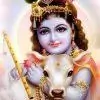Indian cinema turned 100 on April 21, 2012. In a country where over 1,000 films are made every year, in several languages, when we celebrate a century of filmmaking excellence, how do we define Indian cinema?
A hundred years ago Dada Saheb Phalke made a movie about a king who never lied. His first production 'Raja Harishchandra' was screened at Coronation Cinema in Mumbai on 3 May 1913 marking the beginning of Indian cinema. Regarded as the father of the Indian cinema, Phalke went on to make several silent films but became the first casualty when the silent era passed.
'Alam Ara' debuted at Majestic Cinema in Mumbai on 14 March 1931, a love story between a gypsy and a prince, starring Zubeida, Master Vettal as well as Prithvi Raj Kapoor. It was so popular that police had to be called in to control the crowd. Ironically the first talkie now lies silent as its print perished in a fire in National archive in 2003.
The talkies changed the face of Indian cinema. Apart from looks, the actors not only needed a commanding voice but also singing skills, as music became a defining element in Indian cinema.
Mainstream Hindi cinema is the closest we have to a truly national cinema because it has traditionally addressed people across the length and breadth of the country. It has kept its language simple and a Hindi vocabulary of a dozen words is enough to understand any Hindi film. Hindi cinema became a national cinema several years before Independence.
Romantic melodrama - or, in India cinemaesque-speak, masala entertainment - remains the staple of Indian cinema across the 15 or more regional language movie industries across the country. However, in the 21st century, things have changed. Bollywood, India's most widely watched Hindi moviedom, is changing its plot.
This is the DOTW. Lets discuss our Cinema 😃 The beautiful century of films , of dreams ❤️
































